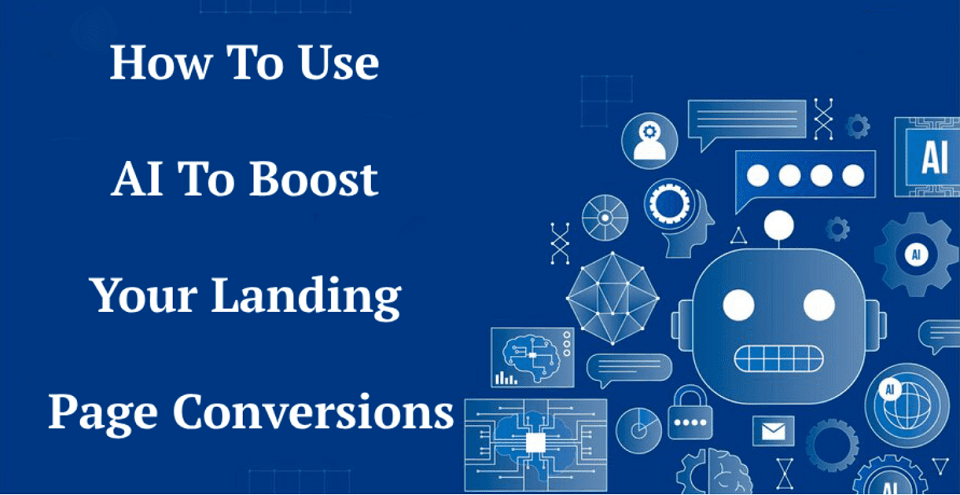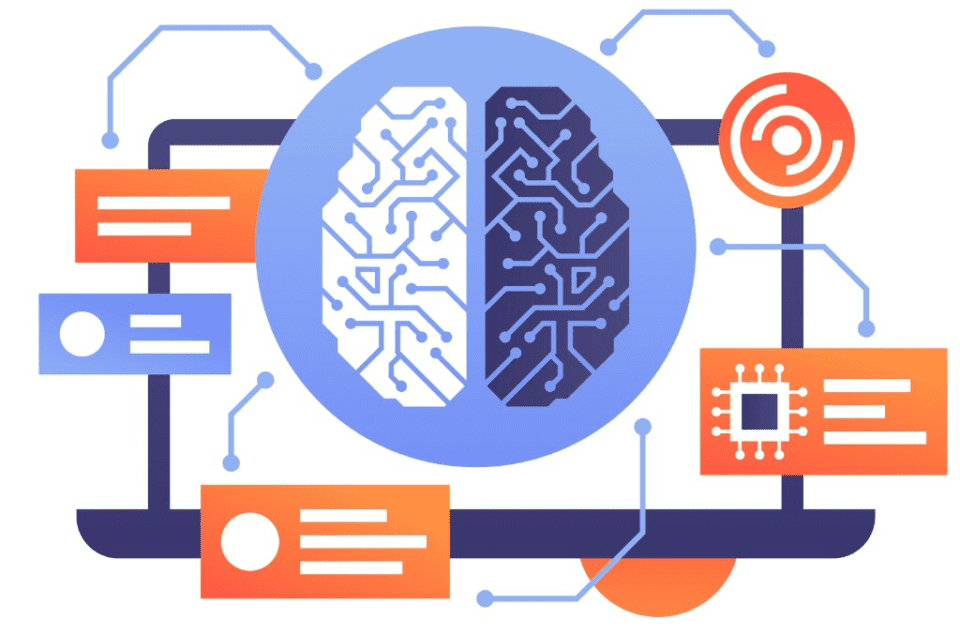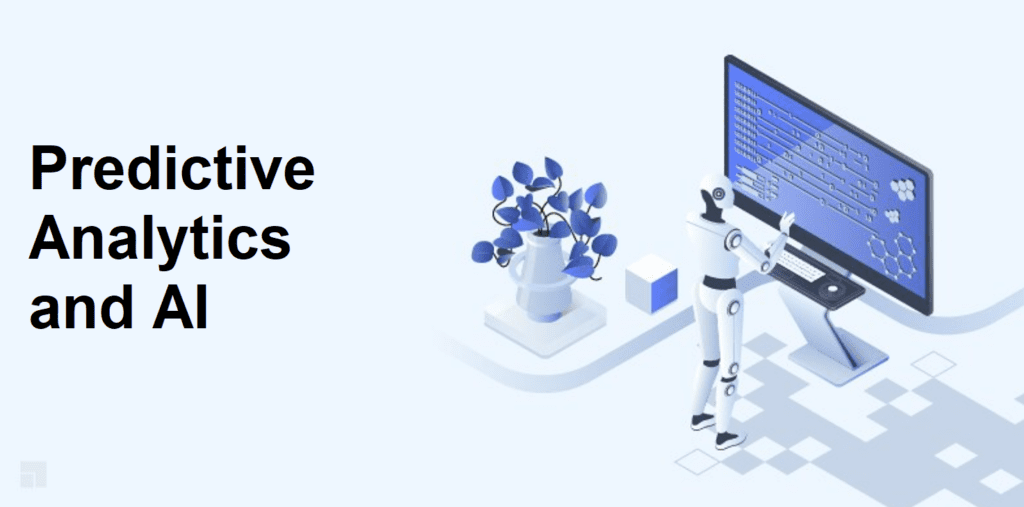For organizations today, AI governance is not just a ‘nice-to-have.’
It serves as a framework that guides the responsible use of Artificial Intelligence (AI) technologies.
By embracing this governance, you can ensure transparency, accountability, and alignment with ethical standards.
Sound AI governance lays the foundation for trust and integrity in your systems.
AI Governance: Definition and Importance
While many view AI governance as a set of rules, it represents a broader strategy that encompasses:
- Ethical considerations
- Stakeholder involvement
- Decision-making processes
It helps you navigate the complexities of AI risks, ensuring that technology serves humanity rather than endangering it.
Historical Context and Evolution
The conversation around AI governance has grown alongside the technology itself, evolving in response to societal needs and ethical dilemmas.
For instance, in the early stages of AI development, most of the focus centered on technological advancements.
As AI applications expanded into more sectors, people began to raise concerns about risks and ethical implications.
Regulatory bodies and industry leaders began to recognize the need for structured governance to address these complex issues.
Today, you see a more comprehensive approach that considers not only compliance but also fair use and societal impact.
Relevance Across Industries
AI governance touches all sectors, in a range of industries like finance, healthcare, and manufacturing.
Industries vary in their challenges but share a common need for guidelines and oversight.
Because it’s affecting so many sectors, no one is immune to AI. Every organization needs to integrate AI governance into its core strategy.
Companies that implement effective governance frameworks can reduce risk while enhancing their reputation.
Like I said, it’s no longer a nice to have. AI governance is important to any business in any industry, if they plan to use AI at all.
Types of AI Governance Frameworks
Different types of frameworks provide guidance on how to operate safely and ethically in this evolving space.
Each comes with distinct features and focuses.
After reviewing these frameworks, you can identify which suits your needs best.
| Framework Type | Description |
| Regulatory Frameworks | Set of laws and guidelines imposed by governments to ensure compliance and safety |
| Organizational Frameworks | Internal policies and practices within a company to govern AI usage |
| Ethical Frameworks | Guidelines defining moral principles surrounding AI technologies and their applications |
| Technical Frameworks | Standards and protocols for the development and deployment of AI systems |
| Hybrid Frameworks | A blend of various frameworks to cover a wider range of issues and areas |
Regulatory Frameworks
If you need to comply with laws governing AI, you’ll need to fully understand regulatory frameworks.
These frameworks set standards to protect users and promote transparency.
They require organizations to monitor their AI systems and report any issues promptly.
Organizational Frameworks
Organizational frameworks help manage how your company develops and implements AI.
It is comprised of internal policies that cover risk assessment, testing protocols, and decision-making processes.
This structured approach enables your organization to align AI practices with business objectives while prioritizing safety and accountability.
By training staff on these policies, you can ensure that everyone understands their role in maintaining governance standards.
Ethical Frameworks
An ethical framework focuses on the moral implications of AI technologies.
It includes things like fairness, transparency, and accountability within your systems.
This type of framework guides your decision-making to prioritize human well-being and social responsibility.
This commitment to ethical considerations can enhance trust in your AI solutions.
And for marketers, you should consider this one mandatory when weaving AI capabilities into your campaigns and messaging.
This factor is included in the HAIF model. I can help you ensure you implement ethical AI practices that elevate your team without exposing you to unnecessary risk.
Key Factors Influencing AI Governance
All organizations face challenges when trying to govern artificial intelligence.
You’ll need to understand these factors so you can create a robust governance framework to minimize risks.
Technological Considerations
You need to stay updated on emerging tools, software, and algorithms that impact AI systems.
Once you understand these technologies, you’ll be able to better manage risk and make more informed decisions.
Legal and Regulatory Environments
With AI quickly evolving, regulatory frameworks are struggling to keep pace.
In many cases, you might find that there laws and regulations are unclear or outdated. This is a serious challenge for compliance.
You will have to take a deep dive and thoroughly understand important laws to govern AI properly.
Always stay informed about data protection laws, intellectual property rights, and industry standards.
Then, configure your AI practices to align with these legal frameworks. This is the only safe way to navigate potential risks and promote responsible innovation.
Societal Expectations
Public perception, ethical concerns, and trust play significant roles in shaping how others view your AI applications.
You’ll have to engage with stakeholders to manage these expectations.
And of course, you’ll find that regulatory bodies tend to reflect societal concerns.
Because of this, you should aim to align your AI practices with community values and ethical guidelines.
By doing so, you foster trust and ensure responsible use of AI technologies in your organization.
Core Components of AI Governance
It should be clear now that you’ll need to establish a robust framework for AI governance.
This framework minimizes risk and promotes responsible AI use.
Let’s look at specific areas we all need to take into account for getting the governance thing right.
Strategy and Policy Development
With a clear strategy and informed policies, you define your organization’s vision for AI.
This includes aligning AI initiatives with business goals and values.
Develop guidelines that incorporate ethical considerations and stakeholder engagement to foster trust and transparency.
Risk Assessment Protocols
Risk assessment protocols help identify, evaluate, and prioritize potential risks associated with AI projects.
These assessments will enhance your awareness of the impact and implications of AI deployment.
Development of these protocols involves identifying risks in various stages, from planning to deployment.
Assess both technical and ethical risks. Review data privacy, security, and bias concerns.
Regularly update your risk assessment protocols as technology and regulations evolve.
Engage stakeholders throughout this process. This will lead to more thorough evaluations and informed decision-making.
Compliance Mechanisms
In a society like ours, it’s mandatory that you have processes in place to align with regulations and standards.
This can involve regular audits, monitoring of AI system performance, and reporting on compliance status.
A culture of accountability will serve your organization well.
With good processes in place, you can track and address any deviations from established guidelines.
Be sure to keep up with emerging regulations and changes in standards.
Your organization should provide training for employees on legal and ethical implications related to AI.
Regularly review and adjust compliance measures based on lessons learned and industry developments.
This will further strengthen your governance framework overall.
Steps to Establish an AI Governance Framework
Many organizations face challenges in implementing effective AI governance.
A solid framework will help you manage risks and align AI initiatives with your goals.
Let’s look at the right steps you should take to create a tailored approach that meets your organization’s needs.
Assess Current Capabilities
Capabilities in your organization will vary.
Evaluate your existing AI technologies, processes, and team skills.
Understand where you stand to identify gaps and areas for improvement.
This assessment provides a solid foundation for your governance framework.
Define Governance Objectives
The objectives of your governance framework should guide your decision making.
Set specific targets that align with your organization’s overall strategy.
Objectives can include things like:
- Enhancing data privacy
- Ensuring ethical AI use
- Improving compliance across operations
To define these objectives, engage key stakeholders from different areas of your organization.
Their input will help ensure that your framework meets a range of needs and expectations.
With clear objectives, you can optimize how to approach governance and ensure accountability.
Create Implementation Roadmaps
With a good roadmap in place, you’ll have a clear idea of the steps you need to take before getting started.
When composing one, you will need to highlight milestones, responsibilities, and timelines.
Your roadmap should remain flexible to accommodate emerging technologies and regulatory changes.
Review and update your plan regularly to ensure it stays relevant and meets evolving needs.
This approach helps you stay on track while addressing unforeseen issues as they arise.
Risk Management in AI Governance
Your approach to AI governance must include effective risk management practices.
This is how you can minimize negative outcomes that can arise from AI systems.
By identifying potential risks, you’ll be setting the foundation for a robust governance framework.
Identifying Potential Risks
So, exactly how should you go about identifying the potential risks associated with your AI systems?
Consider ethical implications, technical failures, and regulatory compliance issues.
Once you understand all of these, you will be able to evaluate where vulnerabilities may pop up.
Developing Mitigation Strategies
Be sure to think through action plans to address each identified risk effectively. It pays to be proactive.
The key is to align these mitigation strategies with your organization’s specific context.
Each strategy must fit your operational needs and the unique challenges of AI systems.
This might involve implementing new policies, providing training, or adjusting technology.
But in any scenario, be sure your team knows what to do when things don’t go as planned and issues arise.
Monitoring and Reporting Mechanisms
Plan in advance to do regular assessments. This is how you can stay informed about potential issues and the effectiveness of your mitigation strategies.
When monitoring, always focus on real-time data collection and analysis.
Set up reporting structures that help you to communicate findings effectively within your organization.
Always be as transparent as possible. This way, you’ll encourage a culture of risk awareness and make better decisions when challenges DO arise.
The Importance of Data Governance
Your AI systems rely heavily on the data they process, so you can’t leave any stone unturned when it comes to data security.
Poor data governance can result in errors, ethical issues, and security risks that may damage your organization’s reputation and operations.
Data Quality and Integrity
While high-quality data is the foundation of effective AI systems, you must ensure integrity throughout the data lifecycle.
Bad data leads to bad decisions, and vice versa.
Establish processes for regularly checking and validating data to maintain its quality and reliability.
Ethical Sourcing of Data
You will want to approach data sourcing in the most responsible way possible.
By getting this right, you protect not only your organization but also the individuals behind the data.
This is how you can build trust and maintain your brand’s reputation in the market.
Focus on data collection processes, including where the data itself originates. Make sure you are using legal and reputable sources whenever humanly possible.
When collecting data directly from end users, always seek permission and stay transparent with how you will use the information.
Not only will this practice build trust, but it will also encourage people in your organization to operate ethically with accountability.
Privacy and Security Measures
Hackers can simply FEED on poorly protected data.
To avoid breaches, you’ll need strict security protocols and regular audits to mitigate risks.
You can only protect your data if you fully understand the compliance and regulatory requirements.
Be sure you and your team are fully up to speed on GDPR, CCPA, and other privacy laws.
Regularly train your team on security practices and awareness.
An informed team can better identify potential threats and report them promptly.
Transparency and Explainability in AI
The demand for clarity in how AI models make decisions has never been more pressing.
You need to ensure that users and stakeholders understand the rationale behind AI processes.
Importance of Transparent AI Systems
With transparent AI systems, you can enhance accountability, ensuring stakeholders trust the decisions these systems make.
With clarity about data usage and algorithmic processes in place, you will be able to better address potential biases and ethical concerns.
Techniques for Enhancing Explainability
You’ll want to learn about model-agnostic methods, feature importance analysis, and visualization techniques to better understand how models reach conclusions.
Each of these methods provides unique insights that explain the behavior of AI systems accurately.
As a professional working with AI, you benefit from using techniques like Local Interpretable Model-agnostic Explanations (LIME) or SHapley Additive exPlanations (SHAP), which can break down and interpret the model’s predictions.
You gain the ability to analyze how different features impact outcomes, leading to more informed actions and insights.
Building Trust Through Clarity
For users to feel comfortable adopting AI solutions, they will need clear communication about how these systems operate.
By providing straightforward explanations, you help build a bridge of trust between users and technology.
The clearer you are about how an AI system functions, the more likely users will embrace it.
When you explain not only the outcomes but also the elements that influence these results, you empower your audience.
They can use that knowledge to make better decisions and feel more confident in relying on AI tools.
Human Oversight and Accountability
As compared to traditional systems, AI requires even greater human oversight and accountability.
As organizations adopt AI technologies, you will need to define clear human roles throughout the deployment process.
Defining Human Roles in AI Deployment
Deployment of AI requires well-defined roles for humans to ensure responsible and ethical use.
You need to establish responsibilities for monitoring AI outputs, making decisions, and addressing any issues that arise during the process.
This clarity fosters trust and transparency in your AI systems.
Balancing Automation and Human Judgment
From the start, aim to find the harmony between the efficiency of AI and the insight that comes from human experience.
Automation handles repetitive tasks effectively, allowing you to focus on more complex decisions.
Your intuition and understanding of context can enrich the decision-making process. This is something that machines alone cannot provide.
Never let AI run without human involvement. This is how you can prevent errors, misinterpretations, and poor outcomes.
All of these gaffs could damage your organization or its reputation.
Training and Empowering Employees
Your workforce needs to understand how AI systems work and how to interact with them effectively.
Promote a culture of learning and build skills necessary for implementing AI responsibly.
For instance, when you invest in training, you are preparing your employees to handle AI outputs intelligently.
They learn to troubleshoot, make informed decisions, and interpret results critically.
Training builds confidence for your staff, enabling them to engage with AI actively.
Pros and Cons of AI Governance Models
Each model presents various advantages and disadvantages that can impact your strategy.
Below is a summary of the pros and cons you can expect from putting AI Governance in place:
| Pros | Cons |
|---|---|
| Promotes accountability | May require extensive resources |
| Enhances public trust | Can slow down innovation |
| Establishes ethical guidelines | Involves complex regulatory frameworks |
| Encourages stakeholder engagement | Risk of bureaucratic hurdles |
| Supports transparency | Presents challenges in global compliance |
| Facilitates collaboration | Can lead to inconsistent standards |
| Drives responsible AI development | Difficult to monitor compliance |
| Aims for long-term sustainability | May not accommodate rapid changes in technology |
| Increases investment in safety measures | Initial costs can be high |
| Promotes innovation in responsible ways | Risk of enforceability issues |
Challenges of Implementing Governance
Cons often arise when you implement AI governance frameworks.
One of the biggest issues is how to balance oversight with speed of innovation.
Governance structures may require dedicated teams and resources that can stretch your organization’s capacities.
But in the end, you’ll gain significant benefits by approaching\ these challenges strategically.
Develop a clear plan that includes ongoing training and support for your teams.
This proactive approach can help mitigate resource limitations and ensure your organization remains agile and compliant.
Focus on gradual implementation to allow for cultural shifts within your organization.
Long-term Implications of AI Governance
In the long-term, both you and your organization will benefit from more sustainable AI governance practices.
By integrating governance within your business model, you can create lasting relationships with stakeholders, enhancing your reputation and trustworthiness.
A forward-thinking approach to AI governance can position your organization as a leader in ethics and responsibility.
You will not only be addressing current risks but also anticipating future challenges, ensuring ongoing compliance with evolving regulations.
This stance positions you to adapt quickly, making your AI initiatives more resilient over time. With good processes in place, you can position yourself well for the future of AI.
Tips for Successful Implementation of AI Governance
Your approach to AI governance can significantly impact your organization’s success.
For effective governance, focus on practical strategies that help you minimize risks and maximize benefits.
Here are a few tips to keep in mind:
- Start small and scale incrementally
- Engage stakeholders early and often
- Encourage a culture of openness and communication
- Prioritize ethics and compliance in AI projects
- Establish clear metrics to measure success
- Integrate regular reviews and updates into your governance plan
With this methodical approach, you’ll be well along the way to setting up a governance system that works over time.
Evaluating AI Governance Effectiveness
Keep track of your AI governance performance to ensure it meets your goals and reduces risks effectively.
Performance Metrics and KPIs
Start by defining clear performance metrics and key performance indicators (KPIs).
These will help you measure success and highlight areas for improvement.
Consider metrics like accuracy, fairness, and transparency to get a comprehensive view of your AI systems.
Feedback Mechanisms
Feedback mechanisms can play a significant role in refining AI governance.
They give you valuable insights from users and stakeholders to guide your decision-making process.
With good feedback, you can focus on improvement over time.
Establish user channels for suggestions, reviews, and concerns. You can create an open dialog with regular check-ins and surveys.
This approach keeps your governance adaptive to emerging challenges and needs.
External Audits and Reviews
These assessments provide unbiased evaluations of your processes and outcomes.
With metrics gathered through external audits, you can learn how your AI systems align with established standards and regulations.
This process helps identify potential weaknesses and areas needing attention.
Audits also inspire confidence among stakeholders by demonstrating accountability in your AI practices.
The Role of Organizational Culture in AI Governance
Never underestimate the impact of organizational culture on AI governance.
Culture shapes how you approach risk, ethics, and innovation.
It guides decision-making and determines how your employees respond to the challenges AI brings.
A strong culture will encourage and support transparency and trust, helping to align your goals with responsible AI practices.
How to Foster a Culture of Ethics and Accountability
Your organization’s culture should encourage ethical behavior from day one.
By embedding ethical principles into your AI practices, you are creating an environment that values integrity.
This culture promotes accountability at every level.
When you emphasize ethics, your team understands the importance of responsible AI deployment.
Encourage Cross-Department Collaboration
AI initiatives usually involve multiple departments, so you’ll have to figure out effective collaboration as you move forward.
To ensure everyone understands the implications and risks tied to AI, you will need great teamwork across the board.
Governance becomes more effective when people from different departments work together.
Encourage open communication to address challenges collectively. Diverse perspectives bring unique insights that can lead to innovative solutions.
This collaboration ensures that your AI governance remains agile and responsive to changing circumstances.
Empower Employees to Speak Up
When you encourage open dialogue, your team will feel safe to voice their opinions.
This empowerment builds trust and helps to identify potential issues early on.
It creates a culture of responsiveness that aligns with effective AI governance.
Speak up when you notice something amiss. Your insights are valuable in shaping AI governance.
Open discussion helps everyone stay alert to ethical dilemmas and potential risks.
An open environment strengthens your organization’s ability to adapt. It enables you to harness employee insights for better decision-making.
Future Trends in AI Governance
As the AI landscape matures, AI governance will evolve based on legal requirements and technological innovations.
You need to stay on top of these trends to minimize risk and remain compliant over time.
Evolving Legal and Regulatory Landscape
Future changes in legal frameworks will demand flexibility and adaptability. Governments worldwide are revising their approaches to AI regulations.
You will need to stay informed about these shifts to ensure your policies align with new requirements.
Innovations in Technology and AI
Regulatory bodies will increasingly focus on how technological advancements influence AI governance.
You might see new tools and methods that not only enhance AI capabilities but also improve accountability.
If you stay up to date with these developments, you’ll be able to maintain a strong governance framework.
Changing Public Perspectives on AI
Future shifts in public opinion will greatly affect how AI governance evolves.
As you share information about AI’s benefits and risks, you’ll need to engage with diverse perspectives.
By understanding these views, you can shape your governance practices in a way that resonates with the people it affects.
People will want more and more transparency, and for systems to operate in fair, ethical ways.
Always communicate clearly about how your AI systems work and the measures you take to ensure ethical practices.
AI isn’t just about technology. It is also dependent on society accepting the technologies without fear and mistrust.
By deploying good AI Governance practices, you can benefit from AI’s promise without breaking laws or alienating your stakeholders. A true win-win!
Tommy Landry
Latest posts by Tommy Landry (see all)
- Local SEO Meets AEO and GEO: How AI Platforms Read Local Authority Signals - December 9, 2025
- What Is an SEO Proposal and What Should It Include? - December 2, 2025
- The Complete Guide to Dental SEO: How Dentists Can Attract More Local Patients Online - November 25, 2025





